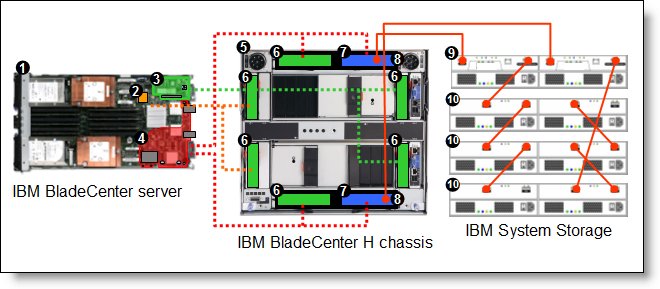
A step-by-step example of a Linux configuration to configure iSCSI diskless booting.
Drivers shimano shifters. This release provides updated network controller firmware for the QLogic BCM57xx and BCM57xxx devices. This release should be used with the QLogic family version 19.0 device drivers. Newbie question. Download pangolin laser others driver. We've just purchased 2 (seemingly identical) Dell R710 power edge servers and installed ESXi 6.5. We are new to VM and are trying to make LUNS available from our Dell MD3220 Storage array. When managing 'Sever A' in vShpere Web Client I can see 4 x Qlogic Netxtreme II iScsi adapt.
These steps can also be used for diskless NFS booting.
In our instructions, we will configure and load the IBM 8247-22L server, ppc64le architecture.
The OS we will be loading will be Ubuntu 14.04.
Fedora 18, x86 architecture will act as the OS on which the image connected via iSCSI (iscsi target) will live.
It is also possible to use Ubuntu 15.04 and any other new version of Fedora - 20, 21, 22, etc.
The instruction assumes that iscsi target will be on x86 architecture, and iscsi initiator on ppc64le,
Qlogic Scsi & Raid Devices Driver Download For Windows Xp
it is better for you if you have everything the same.
We will follow these steps:
- Create a disk.
- Set up and run iSCSI target.
- Install Ubuntu on a USB flash drive.
- Let's take the data we need from the flash drive system.
- Install Ubuntu on a remote iSCSI drive.
- Create an initrd image with iSCSI support.
- Let's configure the PXE server as part of the DHCP server.
- Let's configure the PXE server in the TFTP server part.
- Finally, boot from PXE via iSCSI.
Configuring iSCSI target
We connect our server with a network cable to the machine where Fedora is installed, let the name of the network interface be em1 here.
Also, let the IP of this machine on em1 be 169.254.2.140.
On this machine, create a 10GiB container:
Configuring, connecting and launching iSCSI target:
Also, let the IP of this machine on em1 be 169.254.2.140.
On this machine, create a 10GiB container:
Configuring, connecting and launching iSCSI target:
The latter command allows access to the address 169.254.2.148, this is the address of the server we connected.
The tgtadm utility lives in the scsi-target-utils package.If we use complex iptables rules, redirection, masquerade, do not forget to allow packet forwarding:
Hint for loopback mount
Installing the OS on a USB flash drive
Download the Ubuntu 15.04 (or other) image for our server http://cdimage.ubuntu.com/releases/15.04/release/ -- use PowerPC64 Little-Endian server install image. * For POWER8 Little-Endian computers, such as Power Systems S8xxL Linux-only servers.
* For POWER8 Little-Endian computers, such as Power Systems S8xxL Linux-only servers.We will write this image to a USB flash drive or to a CD-ROM.
Then install the image from the CD-ROM to FLASH, or from one FLASH to another, from CD-ROM or FLASH to the hard disk.
We will need this installation in order to:
- After loading into it to form initrd with iSCSI support.
- Also, get the kernel image from here.
- Also, get the pxelinux.0 file from here.
Create an initrd image with iSCSI support, copy the kernel image and the necessary data
To install packages, you need to bring the OS to the Internet.

Installing Ubuntu on a Remote iSCSI Disk
In the 'Ununut' installer, you can select the option to connect extended drives.
Having selected it, you need to specify the iSCSI target name as server1:disk1.
Specify 169.254.2.140 as the IP address, as the port 3260.
After which, as usual, partition the remote disk and install Ubuntu again.
Having selected it, you need to specify the iSCSI target name as server1:disk1.
Specify 169.254.2.140 as the IP address, as the port 3260.
After which, as usual, partition the remote disk and install Ubuntu again.
Qlogic Scsi & Raid Devices Driver Download For Windows 7
Set up a PXE server
We need to configure DHCP and TFTP server.
For Fedora, the names of the packages we need are:If for some reason you raise your iSCSI 'target' to Ubuntu, then:
initrd.img-3.13.0-24-generic pxelinux.0 vmlinux-3.13.0-24-generic
copy to: chmod 644 /var/lib/tftpboot/.
Then we set the world-readable rights:
For Fedora, the names of the packages we need are:If for some reason you raise your iSCSI 'target' to Ubuntu, then:
You can listen to all the commands going to the TFTP server like this: tcpdump -nnn -i em1 port 69Now PXE configuration:
In arguments, the adra may need to specify console=tty0 if you see the kernel loading, but you do not see initrd starting and loading the system.
You may need to change root=/dev/sda2 if you partitioned the drive using iSCSI differently.Previously copied to flash drive into the /out/ files
initrd.img-3.13.0-24-generic pxelinux.0 vmlinux-3.13.0-24-generic
copy to: chmod 644 /var/lib/tftpboot/.
Then we set the world-readable rights:
We load the server on PXE from iSCSI disk
Qlogic Scsi & Raid Devices Driver Download For Windows 10
In the case of the IBM servers, when they start, a boot manager named Petitboot is loaded.It scans the network and local media for download sources, in our caseour network boot with the name Linux will be displayed, here is what it will look likesettings:
